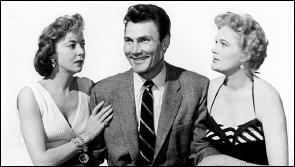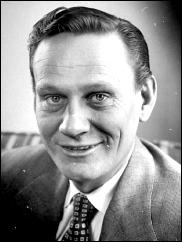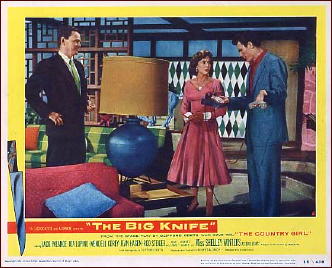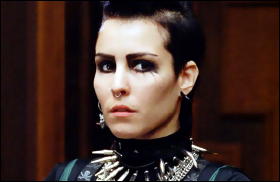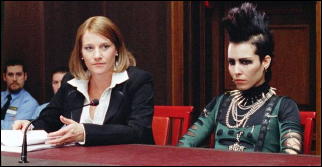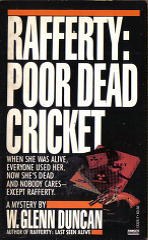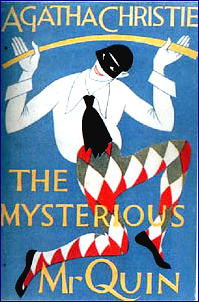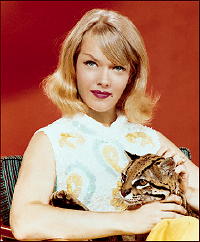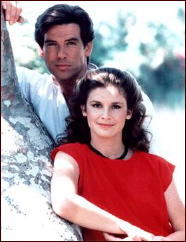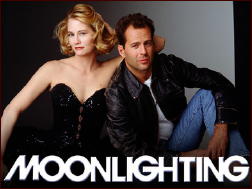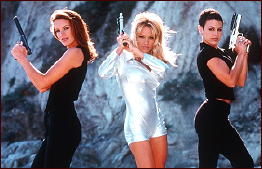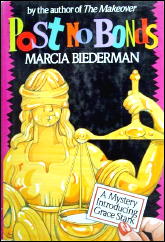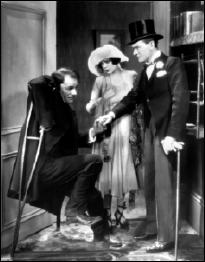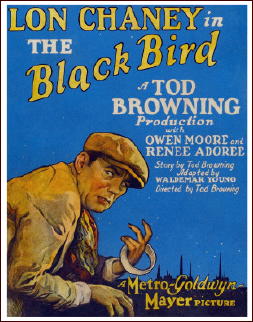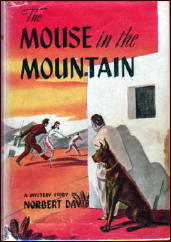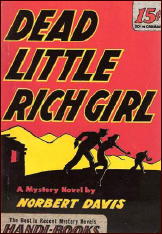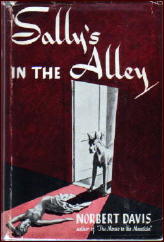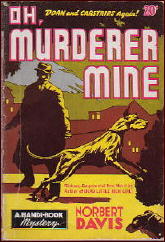MAKE A LIST:
American TV Series with Female Licensed PI’s
by Michael Shonk
This is a list of the female licensed PI’s featured in American TV series only. We will save the amateurs such as Murder She Wrote ’s Jessica Fletcher, female spies such as Mrs. Smith in Mr. & Mrs. Smith, and female cops such as Samantha Spade in Without a Trace for other lists.
THE LIST:
HONEY WEST (ABC 1965-1966). Based on a series of books by G.G. Fickling (Gloria and Forrest Fickling), the series starred Anne Francis as licensed PI Honey West. Honey West’s first television appearance was in Burke’s Law episode “Who Killed the Jackpot†(April 21, 1965).
MOST DEADLY GAME (ABC, 1970-1971) Yvette Mimieux played Vanessa Smith, one of three criminologists who worked together solving unusual murders.
CHARLIE’S ANGELS (ABC, 1976-1981) Charlie’s “angels†were female PIs Sabrina Duncan (Kate Jackson), Jill Munroe (Farah Fawcett), Kelly Garrett (Jaclyn Smith), Kris Munroe (Cheryl Ladd), Tiffany Welles (Shelley Hack), and Julie Rogers (Tanya Roberts).
REMINGTON STEELE (NBC, 1982-1987) PI Laura Holt (Stephanie Zimbalist) created a fictional male boss for her agency to attract clients who thought the idea of a female PI was too feminine. Then one day he walked in…
TUCKER’S WITCH (CBS, 1982-1983) Catherine Hicks as Mrs. Amanda Turker. PI and witch. See: https://mysteryfile.com/blog/?p=6805
PARTNERS IN CRIME (NBC, 1984) PI Raymond Caulfield left his agency to his ex-wives, proper brunette Carole Stanwyck (Lynda Carter) and fun loving blonde Sydney Kovak (Loni Anderson).
ME AND MOM (ABC, 1985) PI Kate Morgan (Lisa Eilbacher) solved crimes with her mom’s (Holland Taylor) help.
LEG WORK (CBS, 1987) Margaret Colin as former assistant district attorney turned PI Claire McCarron, who liked to live beyond her means in New York.
DIAMONDS (CBS Lste Night, 1987-1988) Married couple Christina Towne (Peggy Smithhart) and Mike Devitt (Nicholas Campbell) played PIs on a TV series. The series got cancelled and they got divorced. Later they decided to start their own PI agency.
SYDNEY (CBS, 1990) Sitcom starring Valerie Bertinelli as PI Sydney Kells.
BAYWATCH NIGHTS (Syndicated, 1995-1997) Ryan McBride (Angie Harmon) and Mitch Buchannon (David Hasselhoff) leave the beach to become PIs.
SNOOPS (ABC, 1999) PI agency owned by PI Glenn Hall (Gina Gershon). The staff featured Dana Plant (Paula Marshall), Roberta Young (Paula Jai Parker) and token guy Manny (Danny Nucci).
WILD CARD (Lifetime, 2003-2005) Zoe Busiek (Joey Fisher) teamed up with Dan Lennox (Chris Potter) as PIs for an insurance company. Rae Dawn Chong played PI Sophia Mason in the first season.
VERONICA MARS (UPN 2004-2006) (CW, 2006-2007) Veronica (Kristen Bell) was a student and part time PI in her father’s PI agency.
SEX DECOY (Fox Reality, 2009) Reality series with PI Sandra Hope. She and her operatives entrap cheating husbands for our viewing pleasure.
THE GOOD WIFE (CBS, 2009–present). Law drama. PI Kalinda Sharma (Archie Panjab) works for the law firm Lockhart Gardner.
CHARLIE’S ANGELS (ABC, 2011) Remake with new “angels,†Kate Prince (Annie Ilonzeh), Eve French (Minka Kelly), and Abby Sampson (Rachael Taylor).
PI or Not PI:
KHAN (CBS, 1975) PI Khan (Khigh Dhiegh) was helped by his two college aged children, a son, and his criminologist student daughter Anna (Irene Yah-Ling Sun).
MOONLIGHTING (ABC, 1985-1989) Model Maddie Hayes (Cybill Shepherd) was horrified to discover she owned the Blue Moon detective agency. The agency employed one PI, David Addison (Bruce Willis). David and Maddie solved crimes and found ways to drive up each other’s blood pressure.
EYE TO EYE (ABC, 1985) PI Oscar Poole (Charles Durning) teams up with ex-partner’s young sexy daughter, Tracy Doyle (Stephanie Faracy).
TOTAL SECURITY (ABC, 1997) High-tech security firm with large staff including Jody Kiplinger (Debrah Farentino) and Ellie Jones (Tracey Needham).
V.I.P. (Syndicated, 1998-2002) Pamela Anderson plays Vallery Irons, the “Remington Steele†of bodyguards. While the public believes Vallery is the world’s greatest bodyguard, it is her staff that does all the work. The staff included ex-spy Tasha Dexter (Molly Culver), Nikki (Natalie Raitano) weapons expert, Kay (Leah Lail) computer expert, and Quick (Shaun Baker) marksman and ex-boxer.
THE HUNTRESS (USA, 2000-2001) Dorothy “Dottie†Thorson (Annette O’Toole) and her daughter, Brandi (Jordana Spiro) ran a bounty hunting business.
EYES (ABC, 2005) Harlan Judd (Tim Daly) ran a high-tech investigation firm. The female members of the staff included Nora Gage (Garcelle Beauvais), Meg Bardo (A.J. Langer), Leslie Town (Laura Leighton), and Trish Agermeyer (Natalie Zea).
Did I miss anyone?
I recommend the Thrilling Detective website as a good place to look, especially this page: https://www.thrillingdetective.com/tveyes.html
Other sources include the usual “suspectsâ€: IMDB.com, TV.com, and Complete Directory to Prime Time Network and Cable TV Shows, 1946-Present, by Tim Brooks and Earle Marsh (Ballantine, Ninth edition).

